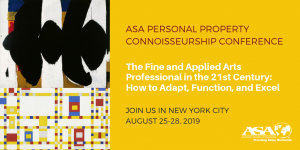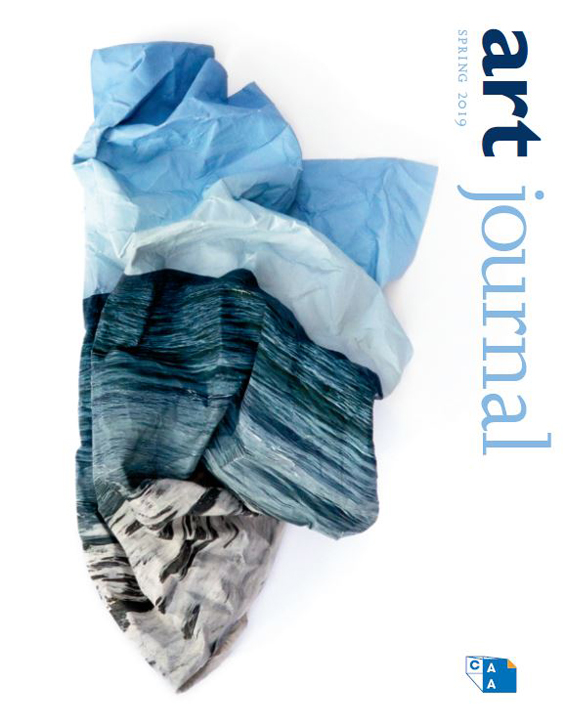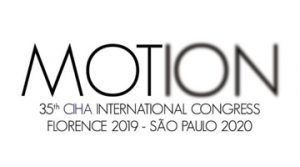CAA News Today
CWA Picks for Summer 2019
posted by CAA — Jul 16, 2019
CAA’s Committee on Women in the Arts selects the best in feminist art and scholarship to share with CAA members on a monthly basis. See the picks for July and August below.
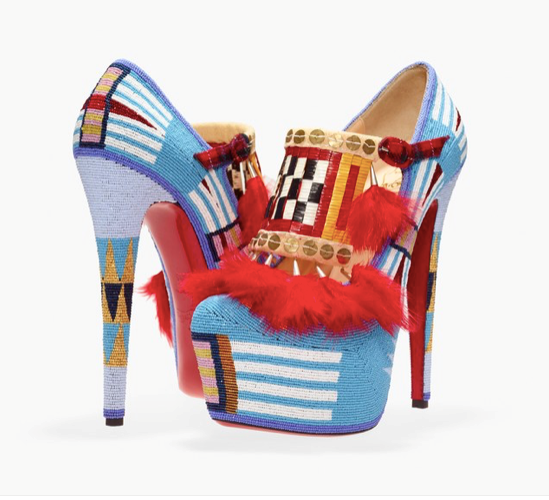
Figure: Jamie Okuma (Luiseño/Shoshone-Bannock, born 1977), Adaptation II (2012), shoes designed by Christian Louboutin, leather, glass beads, porcupine quills, sterling silver cones, brass sequins, chicken feathers, cloth, deer rawhide, buckskin, 8 5/8 x 3 ¼ x 9 3/16 in. (each). Minneapolis Institute of Art, Bequest of Virginia Doneghy, by exchange 2012.68.1a,b
Hearts of Our People: Native Women Artists
Minneapolis Institute of Art
June 2 – August 18, 2019
Hearts of Our People: Native Women Artists is the first-ever museum retrospective of Native American and Canadian female artists. It is guided by three key themes: legacy, relationships, and power, and includes works by more than seventy women artists made in a variety of media, from textiles and bead work to digital arts. The show welcomes visitors with a parked customized 1985 Chevy El Camino fabricated by the mixed-media artist Rose Simpson. It pays homage to Maria Martinez, a potter and the first self-identified, non-anonymous Native artist. The car is outfitted with decals inspired by Pueblo ceramics often designed by women, yet typically unacknowledged. This work, among others on display in this exhibition, addresses the silenced narratives and forgotten, uncredited works of Native American women, offering multiple perspectives on othering, colonization, cultural appropriation, and victimization of practices considered feminine.
Amazonki
Galerie Gmurzynska Zürich, Switzerland
June 8 – September 8, 2019
The title of the exhibition, Amazonki, refers to the Russian word for “Amazons,” in Greek mythology a tribe of women warriors known for their courage. Benedikt Livshits, a poet and a writer, first used this term to address the female Russian avant-gardes, who were described as “real Amazons, Scythian riders.” This exhibition features a selection of remarkable works across different media by women artists of the Russian vanguard, including Maria and Xenia Ender, Natalia Goncharova, Liubov Popova, Olga Rozanova, Nadezhda Udaltsova, and Varvara Stepanova. Their pioneering works from the early 20th-century Russia were significant to the formation of new art movements and redefined the status of female artists.
Filipa César. Quantum Creole
Calouste Gulbenkian Museum, Lisbon, Portugal
May 31 – September 2, 2019
Filipa César’s installation and essay documentary film are featured at the Calouste Gulbenkian Museum and raise issues about colonialism and gentrification on the Bissagos Islands. The project explores the dynamics of Creolization and the subversive dimension of linguistic codes. César’s moving images are characterized by tensions between oppositions: reality and fiction, present and past, stillness and motion. In this exhibition her cinematographic language concerns poetics of resistance within colonial occupation. It is used to investigate notions of weaving and acts of writing in relation to new digital economies. She engages various spatialities and agencies to investigate a subversive potency of quantum weaving against the engineering of binary extractive epistemologies.
Lee Krasner: Living Colour
Barbican Art Gallery
May 30 – September 1, 2019
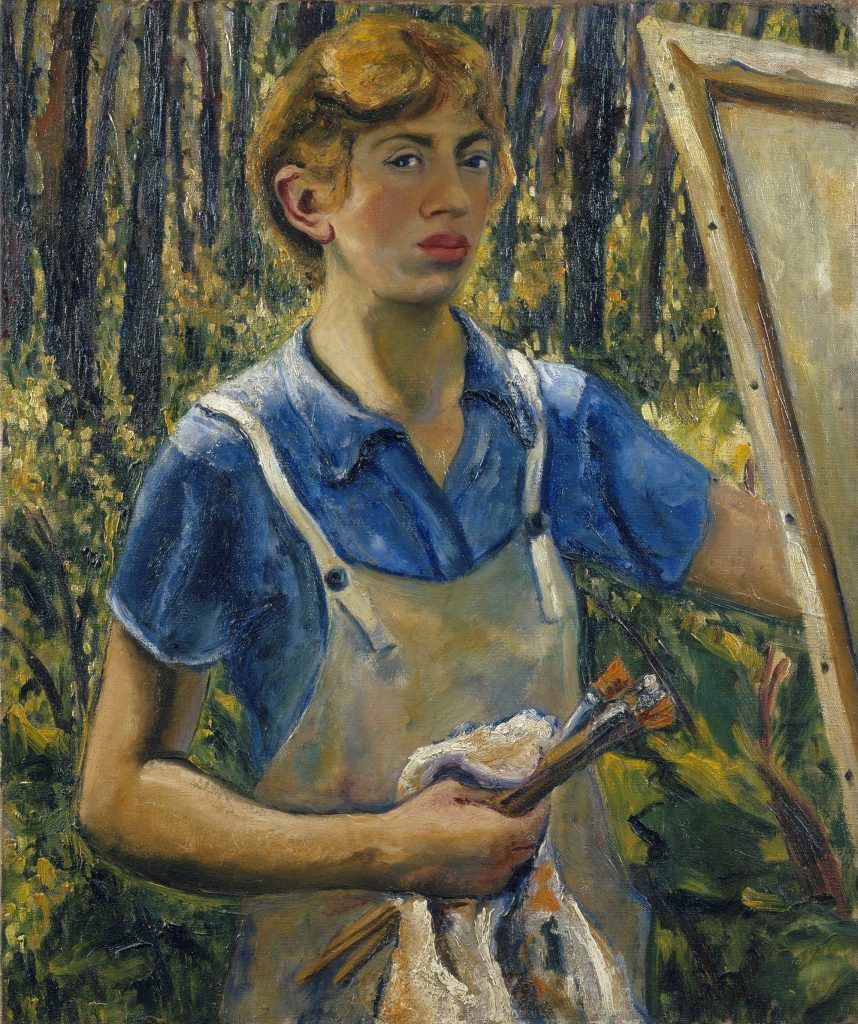
Figure: Krasner, Self-Portrait, c. 1928, The Jewish Museum, New York. © The Pollock-Krasner Foundation. Courtesy the Jewish Museum, New York
“To whom shall I hire myself? What beast must one adore? What holy image attack? What hearts shall I break? What lie must I maintain? In what blood must I walk?” These ferocious lines from Arthur Rimbaud’s poem A Season in Hell were transcribed on Lee Krasner’s (1908-1984) East Village studio wall at 51 East Ninth Street in Manhattan and still pack a punch. They demand our attention just as the formidable career of this legendary Abstract Expressionist artist. The Barbican’s Lee Krasner: Living Colour is the first traveling retrospective on the US artist organized in Europe, curated by Eleanor Nairne. Krasner’s first survey presentation was at the Whitechapel Gallery in London in 1965. The accompanying exhibition catalogue, edited by Nairne with essays by Katy Siegel, John Yau, and Suzanne Hudson, brings further attention to Krasner’s multifaceted personal history, education, and artistic relationships. While significant art historical scholarship was previously established in publications on Krasner, including Ellen Landau’s catalogue raisonné (1995) and Joan Marter’s Women of Abstract Expressionism (2016), this catalogue assesses broad connections and cuts a swath through the artist’s extensive oeuvre, consuming discourse, and marriage to Jackson Pollock. Krasner was renowned and likewise criticized for her perpetual desire to change artistic styles (a problematic issue highlighted in Abstract Expressionist criticism) and tendency to recycle earlier works in the process of remaking new ones. Living Colour is an ambitious curatorial enterprise and offers that there is always room for periodic review and assessment of the depth of women’s creativity and tenacity negotiating the modern male environment of New York in the mid-1940s and 1950s. As much as Krasner looked to the past to clarify her vision, Living Colour affords us the chance to appraise her vast development, rethink her vernacular and personally direct expression, repetition of cycles, utilization of collage, and influences of language and narrative.
CAA Announces Inaugural Recipients of the Art History Fund for Travel to Special Exhibitions
posted by CAA — Jun 19, 2019
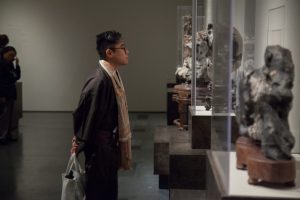
2018 CAA Annual Conference. Photo: Rafael Cardenas
In fall 2018, we announced CAA had received an anonymous gift of $1 million to fund travel for art history faculty and their students to special exhibitions related to their classwork. The generous gift established the Art History Fund for Travel to Special Exhibitions.
The jury for the Art History Fund for Travel to Special Exhibitions met in May 2019 to select the first group of recipients as part of the gift.
The awardees are:
Catherine Girard, Eastern Washington University
Class: Topics in Art History: Manet Inside Out
Exhibition: Manet and Modern Beauty at The J. Paul Getty Museum, Los Angeles
Luis Gordo Peláez, California State University Fresno
Class: Arts of the Colonial Andes
Exhibition: Art & Empire: The Golden Age of Spain at The San Diego Museum of Art
Alison Miller, University of the South
Class: Japanese Print Culture
Exhibition: Yoshitoshi: Spirit and Spectacle at the Minneapolis Institute of Art
Rachel Stephens, University of Alabama
Class: American Portraiture
Exhibition: Black Out: Silhouettes Then and Now at the Birmingham Museum of Art
“We’re delighted to announce the inaugural recipients of the Art History Fund for Travel to Special Exhibitions, a groundbreaking CAA program designed specifically to enhance students’ first-hand knowledge of works of art,” said Hunter O’Hanian, CAA’s executive director. “The new Fund places a spotlight on the critical work art history scholars are doing to grow the field, with CAA as the go-to organization supporting and advancing their work.”
The Art History Fund for Travel to Special Exhibitions supports travel, lodging, and research efforts by art history students and faculty in conjunction with special museum exhibitions in the United States and throughout the world. Awards are made exclusively to support travel to exhibitions that directly correspond to the class content, and exhibitions on all artists, periods, and areas of art history are eligible.
Applications for the second round of grants will be accepted by CAA beginning in fall 2019. Deadlines and details can be found on the Travel Grants page.
The Getty Foundation to Fund the CAA-Getty International Program for a Ninth Year
posted by CAA — Jun 12, 2019
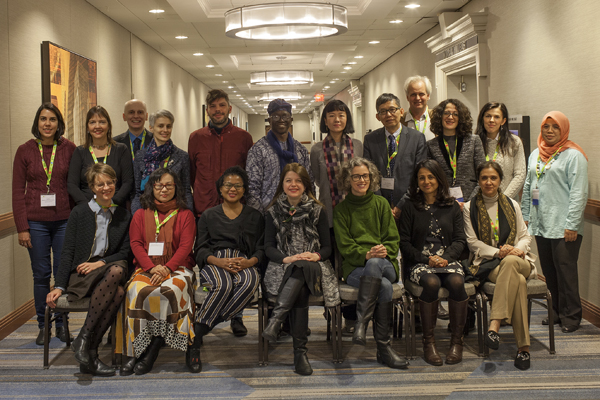
CAA-Getty Scholars at the 2019 Annual Conference in New York. Photo: Ben Fractenberg
The Getty Foundation has awarded CAA a grant to fund the CAA-Getty International Program for a ninth consecutive year. The Foundation’s support will enable CAA to bring twenty international visual-arts professionals to the 108th Annual Conference, taking place February 12-15, 2020 in Chicago. Fifteen individuals will be first-time participants in the program and five will be alumni, returning to present papers during the conference. The CAA-Getty International Program provides funds for travel expenses, hotel accommodations, per diems, conference registrations, and one-year CAA memberships to art historians, artists who teach art history, and museum curators.
The application portal is now open. Grant guidelines and the 2020 application can be found here.
“The Getty Foundation is proud to continue its commitment to the CAA-Getty International Program and offer support that brings together diverse scholars from around the world,” says Joan Weinstein, acting director of the Getty Foundation. “CAA’s dedication to this joint program strengthens the annual conference and builds the field of art history as a global discipline.”
Since the CAA-Getty International Program’s inception in 2012, it has brought over 120 first-time attendees from 46 countries to CAA’s Annual Conference. Historically, the majority of international registrants at the conference have come from North America, the United Kingdom, and Western European countries. The CAA-Getty International Program has greatly diversified attendance, adding scholars from Central and Eastern Europe, Russia, Africa, Asia, Southeast Asia, the Caribbean, and South America. The majority of the participants teach art history, visual studies, art theory, or architectural history at the university level; others are museum curators or researchers.
One measure of the program’s success is the remarkable number of international collaborations that have ensued, including an ongoing study of similarities and differences in the history of art among Eastern European countries and South Africa, attendance at other international conferences, publications in international journals, and participation in panels and sessions at subsequent CAA Annual Conferences. Former grant recipients have become ambassadors of CAA in their countries, sharing knowledge gained at the Annual Conference with their colleagues at home. The value of attending a CAA Annual Conference as a participant in the CAA-Getty International Program was succinctly summarized by alumnus Nazar Kozak, Senior Researcher, Department of Art Studies, National Academy of Sciences of Ukraine “To put it simply, I understood that I can become part of a global scholarly community. I felt like I belong here.”
Read our Member Spotlight with Nazar Kozak.
About the Getty Foundation
The Getty Foundation fulfills the philanthropic mission of the Getty Trust by supporting individuals and institutions committed to advancing the greater understanding and preservation of the visual arts in Los Angeles and throughout the world. Through strategic grant initiatives, it strengthens art history as a global discipline, promotes the interdisciplinary practice of conservation, increases access to museum and archival collections, and develops current and future leaders in the visual arts. It carries out its work in collaboration with the other Getty Programs to ensure that they individually and collectively achieve maximum effect.
CWA Picks for June 2019
posted by CAA — Jun 11, 2019
CAA’s Committee on Women in the Arts selects the best in feminist art and scholarship to share with CAA members on a monthly basis. See the picks for June below.
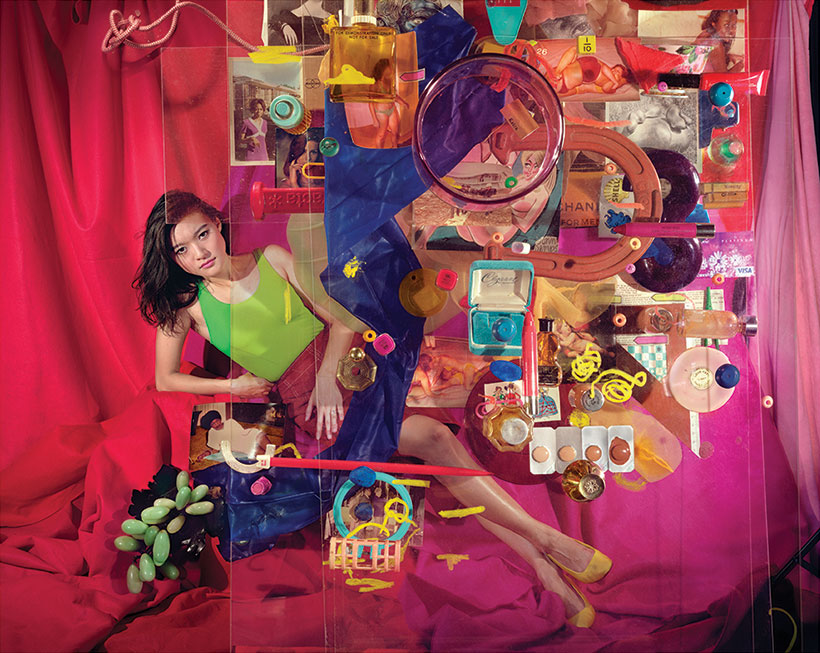
Sara Cwynar, Tracy (Cezanne), 2017. Dye sublimation print. Courtesy of the artist, Cooper Cole, Toronto, Foxy Production, New York. © Sara Cwynar
SARA CWYNAR: IMAGE MODEL MUSE
March 8 – August 4, 2019
Milwaukee Art Museum
Sara Cwynar (b. 1985, Canada) explores both process and the power of the media in a variety of media including photography, collage, book-making and installation. Her first solo exhibition in the US, IMAGE MODEL MUSE at the Milwaukee Art Museum will feature three of her latest films—Soft Film (2016), Rose Gold (2017), and Cover Girl (2018) alongside photographs from her ongoing Tracy series (2008-current). Named for the model in the photographs, the Tracy images acknowledge the history of representation of women with discarded, high-modernist-era designed objects, connecting “the way we treat objects and the way we treat humans,” according to the artist in an Aperture interview. The photographs and films are multi-layered, intricate and deep with eye-catching, bright hues and sharp design, creating bold and successful works aesthetically and substantially. Her films combine these elements with traditions of experimental film and performance video, further questioning issues around imagery and circulation via the internet. Senses and minds are sure to be exercised at this dense exhibit.
JORDAN CASTEEL: RETURNING THE GAZE
May 1 – August 18, 2019
Denver Art Museum
This first major museum exhibition of artist Jordan Casteel (b. 1989, Denver) presents almost thirty paintings, from 2014 to present, showing the artist’s evolving practice and themes from cityscapes and subway scenes to women and local business owners. The oversized portraits with bold colors and intentional heavy contrast exude a clear and bold presence of the individuals and places that perhaps often aren’t paid more than a glance. In Benyam (2018), a trio of individuals at what appears to be a wine bar, look square into the viewers, their poses comfortable but intentional, background details like art on the walls and a plant, wine glasses, lacking much detail, complete the aura of the image, questioning who and what this art is about—those in the painting, those looking, or the moment of looking? Figures depicted sometimes vulnerable, sometimes jovial, always at ease, each one staring deeply at the viewer, presenting an intimate exhibition experience.
SAYA WOOLFALK: EXPEDITION TO THE CHIMACLOUD
March 1 – September 1, 2019
The Nelson-Atkins Museum of Art, Kansas City
Artist Saya Woolfalk (b. 1979, Japan) created ChimaCloud, an alternative digital universe, via an extensive narrative of a fictional race of women she named the Empathics. This exhibition presents an immersive, multi-media experience incorporating themes of cultural hybridization, technology, identity, ceremonial rituals, and science fiction. Especially for this exhibition installation, Woolfalk drew her inspiration directly from the Nelson-Atkins permanent collection, adding a contextual and localized element. “What I hope is to have people feel a little bit distracted…and because they’re so unclear about where they are, they become open…so that, they can take that sense of openness with them into their everyday lives,” said the artist on the museum website. The bright colors, patterns, figures, and lights will likely transport and fulfill the artist’s want.
The 58th International Art Exhibition
May 11 – November 24, 2019
Biennale Arte 2019, Venice, Italy
For the first time in the history of the Venice Biennale half of those artists who contributed to the main exhibition entitled May You Live in Interesting Times, curated by Ralph Rugoff, are women.
Cathy Wilkes
British Pavilion
Cathy Wilkes’ exhibition, featuring new works created for the Biennale Arte 2019 in Venice, occupies the six rooms of the British Pavilion. The viewers are invited to a space filled with melancholy, stillness, and breath-taking natural Venetian daylight. Visiting Venice Biennale can be an overwhelming experience, with the abundance of artworks, the crowds, the queues and the discussions heard almost everywhere. Wilkes, with her characteristic sensibility and attention to the minutiae of matter, created an intimate space that seems to stand still. She stripped the Pavilion of any adornments and insisted on natural light soaking in. The sculptural installations are accompanied by prints and paintings changing hues and tones with the daily and nightly transformations of light. Those variations in colors and textures brought together into intimate relationships and juxtapositions are subtle and interconnected. Wilkes created a space filled with loss but also hope, invoking a sense of daily rituals, scattered across the rooms, disrupted but also complete.
Renate Bertlmann
Austrian Pavilion
For the first time in the history of Austrian contribution to the Venice Biennale, a female artist widely acclaimed in the international feminist avant-garde, Renate Bertlmann, was selected for a solo exhibition in the Austrian Pavilion. Her installation, entitled Discordo Ergo Sum (I disagree, therefore I am), playing on the Descartesian philosophical principle ‘Cogito Ergo Sum’ (I think, therefore I am), is an ironic statement and a subversion of established sociopolitical hierarchies and dichotomies, also within the art world. The artist appropriates a rich vocabulary of social symbols and reviews them from a feminist position encouraging multitude and diversity. At the heart of the exhibition Bertlmann installed a grid of 312 glass roses (hand blown in Murano) out of which protrude razor sharp blades. This is accompanied by a series of works exploring body images and a piece in front of the pavilion, Amo Ergo Sum (I love, therefore I am), which raise issues concerning the transformative potential of art, and gender violence.
Affiliated Society News for June 2019
posted by CAA — Jun 06, 2019
Affiliated Society News shares the new and exciting things CAA’s affiliated organizations are working on including activities, awards, publications, conferences, and exhibitions.
Interested in becoming an Affiliated Society? Learn more here.
American Society of Appraisers
The 2019 ASA Personal Property Connoisseurship Conference – NY will be held at the Marriott Marquis centered in the heart of New York City. With a focus on The Fine and Applied Arts Professional in the 21st Century: How to Adapt, Function and Excel, this intensive three-day conference will provide hard-to-obtain insights into key topics and issues facing personal property appraisers and other art industry professionals. Connect with experts, scholars, and allied professionals from across North America. Presenting speakers include individuals from the industry media, specialty auction houses, galleries, museums, and academia, among others. Register here: http://www.appraisers.org/Education/conferences/personal-property-conference
Association of Art Museum Curators (AAMC)
ASSOCIATION OF ART MUSEUM CURATORS FOUNDATION
Join us this June for a series of three webinars that will restructure and rethink how we consider the topic of management. By focusing on Navigation, Environment and Advancement, the webinars will break with the traditional hierarchical and vertical manner in which conversations around management are typically approached. Each program will present dialogues relevant to all career stages, and will consider ways in which the topic can impact sense of self, well-being, and personal success.
Webinar 1: Navigation – June 11, 2019
Webinar 2: Environment – June 18, 2019
Webinar 3: Advancement – June 25, 2019
Organized and hosted by the AAMC Foundation the series is open to all, with AAMC members receiving discount admission. Limited space is available, register today!
ASSOCIATION OF ART MUSEUM CURATORS (AAMC) & AAMC FOUNDATION
AAMC members are invited to Submit a Session Proposal for the 2020 AAMC & AAMC Foundation Conference, slated for May 2 – 5, 2020 in Seattle, WA. We are seeking proposals on the topic of advancing curatorial work and art organizations beyond traditional and perceived thresholds and boundaries. In selecting this topic, we anticipate dialogues reconsidering linear narratives, challenging concepts of borders, investigating social and cross cultural interactions, and engaging in activism.
We request proposals considering the full spectrum of interpretations, looking at possible topics holistically and not solely through the curatorial lens. Sessions should propose discussions acknowledging community, which involves our workplace colleagues and partners; donors and sponsors; visitors and neighbors; for-profit arts sector; and more. As with all our programming, the proposals should be inclusive and welcoming of a diverse audience. Review the full guidelines and submit your session proposal before 5PM ET on Monday, June 24, 2019.
ASSOCIATION OF ART MUSEUM CURATORS FOUNDATION
Applications are open for AAMC Foundation’s Mentorship Program, which gives early- to mid-career curators opportunities to advance their professional development, learn about important issues in the field, share ideas and cultivate strong bonds with peers, and develop a working relationship with a senior curator. The program’s goal is to advance the skills, experience and knowledge needed to succeed in a curatorial career, not specifically develop a singular curatorial or scholarly project. All Mentees are provided funding to accommodate program components, including travel and other benefits, which are outlined in greater detail here. A group of curator jurors will select ten mentees for 2019-2020 Program, with Mentees and Mentors announced this July.
Applications are due by 12PM ET on Tuesday, June, 25, 2019. Click here to learn more and submit your application today!
Association for Latin American Art (ALAA)
ALAA Awards
In addition to the annual book award, ALAA announces two new awards. See the links for details.
ALAA-Arvey Foundation Book Award
ALAA-Arvey Foundation Exhibition Catalogue Award
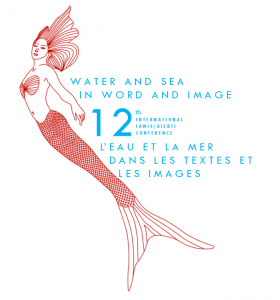
International Association of Word and Image Studies (IAWIS)
CFP for the 2020 Conference in Luxembourg: https://waterandsea2020.uni.lu/program/
American Institute for Conservation
Following a successful Annual Meeting in Connecticut, we are looking forward to our 2020 Annual Meeting in Salt Lake City! The theme will be “Conservation – Reactive and Proactive.” The call for papers will open later this summer, please continue to check our site for updated information.
If you are interested in learning more about conservation and supporting the essential work performed by conservators and preservation professionals, become a Friend of Conservation! Friends receive exclusive insights into conservation, including tips on preserving personal collections, and sustain key programs that promote the preservation of all cultural heritage. Learn about the benefits of being a Friend and how you can help save the art and artifacts that keep our memories alive. Support the Foundation for Advancement in Conservation through www.culturalheritage.org/friends.
International Sculpture Center
Sculpture magazine is thrilled to announce its new website. Go to www.sculpturemagazine.art for reviews, features, news, videos, and other daily content.
Attend workshops, studio tours, and network with artists at the 29th International Sculpture Conference in Portland, OR. Registration opens June 11th at www.sculpture.org/portland19.
Society of Architectural Historians
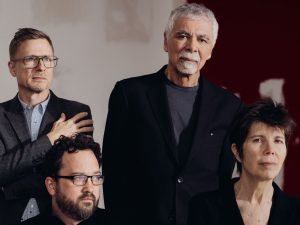
Photo: Geordie Wood, courtesy of DS+R
The Society of Architectural Historians will present the inaugural SAH Change Agent Award to the partners of the New York architecture firm Diller Scofidio + Renfro—Elizabeth Diller, Ricardo Scofidio, Charles Renfro and Benjamin Gilmartin—at a reception at the Century Club in midtown Manhattan on July 17. The award recognizes DS+R for their innovative, paradigm-shifting work, which takes an interdisciplinary approach to design with a focus on cultural and civic projects. Proceeds benefit SAH educational programs and publications, and the ongoing restoration SAH’s landmark headquarters, Charnley-Persky House (1891–1892), designed by Adler and Sullivan with Frank Lloyd Wright.
Nominations for the SAH Publication Awards and the SAH Award for Film and Video are open through July 31. The Publication Awards recognize the most distinguished publications in architectural history, urban history, landscape history, preservation, and architectural exhibition catalogues. The SAH Award for Film and Video was established in 2013 to recognize annually the most distinguished work of film or video on the history of the built environment.
The SAH Board of Directors seeks nominations for the 2020 class of SAH Fellows, those professionally active or retired individuals who have distinguished themselves by a lifetime of significant contributions to the field of architectural history. Deadline August 1.
The SAH Nominating Committee seeks your nominations for five new SAH Board members and a Second Vice President who will begin their terms after the Seattle annual conference in April/May 2020. Deadline August 1.
Graduate students and emerging scholars are invited to apply for the SAH Study Program Fellowship to attend the SAH Field Seminar to Japan, December 6–18. The tour will be led by Ken Tadashi Oshima. The fellowship covers the single occupancy price of the tour and includes a travel stipend. Deadline August 2.
SECAC
On behalf of the SECAC Nominating Committee, First Vice-President Lawrence Jenkens announced that the 2019 SECAC election results have been finalized. The following members have been elected to the SECAC Board of Directors for a three-year term of appointment. For Arkansas, Dito Morales, Associate Professor of Art History at the University of Central Arkansas, was re-elected to a second term. For Florida, Jeff Schwartz, Dean of Undergraduate Studies and Associate Vice-President of Academic Affairs at Ringling College of Art and Design was elected to his first term. For Mississippi, Elise Smith, Professor of Art History and Sanderson Chair of Arts and Sciences at Millsaps College in Jackson, Mississippi, was elected to her first term. Smith previously served on the SECAC Board of Directors from 2000 to 2006. For Tennessee, Christina Renfer Vogel, Assistant Professor of Painting and Drawing at the University of Tennessee at Chattanooga and 2019 SECAC Conference Co-Director, was elected to her first term. For the First At-large Seat, Dennis Ichiyama, Purdue Univeristy Professor of Graphic Design emeritus, was re-elected to a second term. The SECAC Nominating Committee thanks all members who ran for Board seats this year.
Association of Greek Art Historians (EEIT)
The Association of Greek Art Historians (EEIT) hosted a number of distinguished speakers in the context of its 2019 Lecture Series. The aim of the series is to engage a broader audience and promote the discipline of art history in the wider public sphere in Greece. The topics ranged from global art history to the art of the periphery, addressing theoretical and methodological issues of contemporary relevance. Concurrently, novel interpretations of modernism were proposed from the vantage points of both the center, a eurocentric perspective, and the periphery, the lens of the ‘european other.’ James Elkins, E.C. Chadbourne Professor at the School of the Art Institute of Chicago, talked about the “The End of Diversity in Writing about Art” (January 11, 2019, Benaki Museum, 138 Pireos St., Athens, Greece). Elkins proposed that despite recent interest in global artistic production, writing about art is primarily characterized by a hegemony of western theoretical discourses and related practices. Mark Crinson provided an enhanced reading of modernist architecture through the ideals of internationalism in a lecture entitled “Babel as Modernism” (April 11, 2019, Athens School of Fine Arts, Athens, Greece). Mark Crinson is professor of architectural history at Birbeck, University of London and president of the European Architectural History Network (EAHN). Matthew Rampley shared initial thoughts and material related to the European Research Grant project Continuity / Rupture: Art and Architecture in Central Europe 1918-1939 that he is currently leading from Masaryk University in Brno in the Czech Republic. The lecture was entitled “A Legacy of Empire? Art and Architecture in Central Europe after 1918” and examined how ‘modernist’ art was deployed in Central Europe to create and enforce national identities at the aftermath of the collapse of the Habsburg Empire after the First World War. (May 17, 2019, National Hellenic Research Foundation, Athens, Greece).
Design Incubation
Calls for Participation: Design Incubation Upcoming Events
Call for Entries: 2019 Communication Design Educators Awards
An international juried competition of communication design research, practice, teaching, and service. Expand the design record, promote excellence, and share knowledge in the discipline. Submit your creative work, published research, teaching, and service. Nominations are accepted until July 31, 2019. Entries are currently being accepted until August 31, 2019.
Visit the 2019 Design Incubation Communication Design Educators Awards announcement to read about our distinguished jurors.
Colloquium 6.1: Quinnipiac University, Call for Submissions
Call for design research presentation abstracts. Deadline: Saturday, July 6, 2019. Hosted by Courtney Marchese and the School of Communications.
School of Communications
Quinnipiac University
Sat, October 5, 2019
10:00 AM – 5:30 PM
A Day of Writing
Come spend an uninterrupted day working on a writing project. Participants will spend the day writing or conducting preliminary work on a writing project. The Day of Writing is open to design faculty and to those working in related fields.
Quinnipiac University
October 6th 2019
10:00am –4:00pm
The Design Incubation Residency at Haddon Avenue Writing Institute 2019
Rolling acceptances until Sept 30, 2019. Only 14 seats are available for this event. This 3-day residency allows researchers and scholars time to work on existing writing projects or to start a new writing project. It offers participants concentrated time to work on writing projects and the opportunity to take advantage of one-on-one consultations with event facilitator Maggie Taft.
Haddon Avenue Writing Institute
2009 W. Haddon Ave, Chicago Illinois
October 25-27, 2019
Visual Resources Association
Approximately 200 information professionals gathered in LA’s Little Tokyo for the VRA conference from March 26-29, 2019: http://www.vraweb.org/conferences/vra2019/. Many conference presentations have been uploaded to SlideShare at https://www.slideshare.net/VisResAssoc and photographs from the events can be found at https://www.flickr.com/groups/vra_events/. The VRA’s journal of professional practice is expecting articles based on conference presentations to be in the June issue of the VRA Bulletin, which is now an open access online journal, see: https://online.vraweb.org/vrab/
Visual Resources Association (VRA) is a multidisciplinary organization dedicated to furthering research and education in the field of image management within the educational, cultural heritage, and commercial environments. For more information on VRA: http://vraweb.org/.
Call for Proposals
The Visual Resources Association’s 2020 Annual Conference will be held in Baltimore, Maryland from Tuesday, March 24th through Friday, March 27th, 2020 at the Royal Sonesta Harbor Court Baltimore.
Presenting at the VRA Conference provides you with the opportunity to see how your ideas, research, work, and passion connect to those of other dedicated professionals while building networks and friendships in an open, collaborative environment.
Click here to access the conference proposal form.
The VRA Executive Board is soliciting proposals for papers, sessions, special interest/user groups, and workshops for the 2020 program until Friday, July 19th. All proposals are welcome, and if you have other conference ideas or suggestions that do not fit the conference proposal form, please reach out to the Vice President for Conference Program, Sara Schumacher. Please note a call for Lightning Round presenters will go out in the fall/winter, so that we can better accommodate recent innovations and activities, as well as, students and emerging professionals.
A paper is an individual idea submission, which will be reviewed for possible grouping into a session. Your ideas, whether they come to us alone or in a group, are equally valued in the Board’s proposal and selection process.
- A session is a maximum 60-minute moderated panel, usually consisting of no more than 3 presenters each, speaking for 15 to 18 minutes, followed by a brief facilitated question and answer period. If you feel your session topic requires more time, consider dividing it into two sessions, consisting of a Part I and a Part II.
- A special interest/user group is a 60-minute informal, community -driven, facilitated group discussion on topics related to a specific segment of the VRA membership.
- A workshop is a 2, 4, or 8-hour workshop to develop skills and experience in the field of visual resources with hands-on activities.
What should you propose?
Past conference schedules can give you an idea of the range of topics presented in previous years or read through the list below of suggested topics compiled from the 2019 post-conference survey responses to find inspiration. Please, do not be afraid to deviate and propose something new or highlight an area of concern that you feel has not been adequately addressed previously, as you may find new collaborators and colleagues. Moderators may put out calls for presenters within a proposed topic before or after the submission of a proposal. The VRA Executive Board will be looking for articulate and concise submissions with lists of presenters, but submissions without presenter lists are encouraged as well.
Suggested topics:
- Coding (PHP, Python, SQL, etc.)
- Community Outreach
- Copyright/Intellectual Property
- Digital Asset Management, Digital Curation, Digital Preservation, etc.
- Digitization (Workflows, Digital Capture and Imaging Technologies)
- Digital Scholarship and Digital Humanities
- Diversity, Equity, Inclusion, Cultural Competencies, Social Justice
- Project Management (Communication, Grant writing, Prioritization, Leadership, etc.)
- Linked Data
- Materials/Objects collections
- Metadata/Cataloging Ethics (Decolonizing vocabularies, Radical cataloging)
- Storytelling and Oral History
- Technologies (GIS and mapping, 3D imaging, etc.)
- Tools: Open Source, Evolution, Future Trends
- Workplace cultures and professional transitions (academic departments, libraries, cultural heritage institutions, archives, corporate, etc.)
Please contact the Vice President for Conference Program, Sara Schumacher at vpcp@vraweb.org with any questions or concerns.
Again, the proposal deadline is Friday, July 19th, 2019. Click here to access the conference proposal form.
Association for Textual Scholarship (ATSAH)
Members’ Publications and Events May 2019
Publications
Bosch, Lynette M.F. Demi. Skira Publishers, 2019.
Bosch, Lynette M.F. ” The Cuban-American Exile Vanguardia: Towards a Theory of Collecting Cuban-American Art, ” Picturing Cuba: Art, Culture and Identity on the Island and the Diaspora. University of Florida Press, 2019.
Bosch, Lynette M.F “Before 1962: Mannerism and Historiography,” Renaissance Society of America Annual Conference, Toronto, Canada (2019).
Bosch, Lynette M.F. Curator, SUNY Geneseo, “Cuban-American Art and Cultural Identity,” April 3-May 4, 2019
Bosch, Lynette M.F. Curator, Binghmaton University, “Visions and Imagination: Cuban-American and Argentinian Art,” January 31-March 14, 2019.
Carrara, Eliana “Vasari e Ammannati nel Cantiere della Villa Medicea di Castello: Due Disegni del Metropolitan Museum of Art in New York,” in Opus Incertum (2018) pp. 44-53 | ISSN 2239-5660 (print) ISSN 2035-9217 (online) ; DOI: 10.13128/opus-23045 www.fupress.com/oi, pp. 44-53.
Cheney, Liana De Girolami, ““Edward Burne-Jones’s The Mirror of Venus: Physical and Intangible Female Beauty,” Journal of Literature and Art Studies, Vol. 19, No. 1 (January 2019):98-122.
Cheney, Liana De Girolami, “An Alchemical Heaven: The Studiolo Ceiling of Francesco I de’ Medici,” in Esotericism in Europe, ed. Lilian Zirpolo. Ramsey, NJ: Zephyrus Scholarly Publications, 2019, pp. 21-52.
Cheney, Liana De Girolami, “Giorgio Vasari’s Celestial Utopia of Whimsy and Joy: Constellations, Zodiac Signs and Grotesques,” Journal of Cultural and Religious Studies, Vol. 7, No. 1 (January 2019):1-31.Levin, William R. (Centre College, emeritus) has published online the entry for Jacobs Hall, the mid-19th-century
Italianate centerpiece of the Kentucky School for the Deaf in Danville, Kentucky, in the Society of Architectural Historians’ SAH Archipedia Classic Buildings (http://sah-archipedia.org/buildings/KY-01-021-0035). This ongoing national project, issued by the University of Virginia Press, provides detailed information on and photographs of the 100 most important structures in each state in an attractive and easy-to-use format equipped with abundant cross-referencing tools. An illustrated booklet by the author, published in 2014, contains expanded historical and architectural information on Jacobs Hall.
Levin, William R. “Jacobs Hall, Danville, Kentucky.” In SAH Archipedia Classic Buildings. Charlottesville: University of Virginia Press for the Society of Architectural Historians, Chicago, 2017. http://sah-archipedia.org/buildings/KY-01-021-0035.
Levin, William R. “The Bigallo Triptych: A Document of Confraternal Charity in Fourteenth-Century Florence.” Confraternitas 29, no. 1 (Spring 2018): 55-101.
Levin, William R. “Art as Confraternal Documentation: Homeless Children and the Florentine Misericordia in the Trecento.” In A Companion to Medieval and Early Modern Confraternities, edited by Konrad Eisenbichler, 433-457. Brill’s Companions to the Christian Tradition, vol. 83. Leiden, The Netherlands: Koninklijke Brill NV, 2019.
Passignat, É. Traductions, transferts méthodologiques et construction d’une histoire de l’art internationale: quelques cas français et italiens, in « Dire presque la même chose ». L’histoire de l’art et ses traductions (XIXe-XXIe siècles), eds. Adriana Sotropa and Myriam Metayer, Rennes, PUR, 2019: 121-138.
Passignat, É. La sculpture encadrée. Observations sur l’encadrement dans les ensembles sculptés italiens du XVIe siècle, in Jeux et enjeux du cadre dans les systèmes décoratifs à l’époque moderne, edited by Nicolas Cordon et alii, Rennes, PUR (June 2019).
Passignat, É. Book review of: Elisabetta Calderoni, Raccontare gli Antichi. Le Imagini di Vincenzo Cartari [premessa di B. Basile, Ariccia, Aracne editrice, 2017] Giornale storico della letteratura italiana (CXCVI, anno 2019, Fasc. 654 – 2° trimestre).
Passignat, É. Giorgio Vasari, Vita di Pierino da Vinci, scultore, commented by É. Passignat, in G. Vasari, Le vite de’ più eccellenti pittori, scultori e architettori, critical edition by Enrico Mattioda, Alessandria, Edizioni dell’Orso, Volume 4, forthcoming [Fall 2019].
Passignat, É., Giorgio Vasari, Vita di Cristofano Gherardi, detto Doceno, dal Borgo San Sepolcro, pittore, commented by É. Passignat, in G. Vasari, Le vite de’ più eccellenti pittori, scultori e architettori, critical edition directed by Enrico Mattioda, Alessandria, Edizioni dell’Orso, Volume 4, [Fall 2019].
Ricci, Patricia Likos, Professor of the History of Art and Director of the Fine Arts Department at Elizabethtown College presented the paper “On the Englishness of the American Renaissance” at Society of Architectural Historians 72nd International Conference, Providence, Rhode Island, in 2019.
Ricci, Patricia Likos published “The Inquiring Eye: Scientific Illustration and the Production of Knowledge,” a chapter in A Companion to Illustration (Blackwell, 2019).
Awards and Recognition
ATSAH Scholar Committee Awarded to Dr. Damiano Acciarino of the Università di Ca’Foscari Venezia and University of Toronto, Canada, the 2019 ATSAH Scholar Grant for outstanding research on Renaissance antiquarianism published in Lettere sulle Grottesche (Rome: Aracne, 2018).
Liana De Girolami Cheney was awarded the Albert Nelson Marquis Lifetime Achievement Award.
Additional Board to ATSAH
ATSAH announces a new Editorial Board
Damiano Acciarino, Università Ca’ Foscari Venezia
Pino Cascione, Università di Ado Moro, Bari, Italy
Karen Goodchild, Wofford College
Brian Steele, Texas Tech University
Katherine Powers, Fullerton University
Emilie Passignat, Independent Scholar, Florence
Lynette M.F. Bosch, State University of New York-Geneseo
Charles Burroughs, State University of New York-Geneseo
Andrzej Piotrowski, University of Minnesota
Yael Even, University of Missouri, St. Louis
In Memoriam
Sarah Jordan Lippert (1975-2019), Associate Professor of Art History at the University of Michigan-Flint, Director of the Society for Paragone Studies, Editor-in-Chief of its journal Paragone: Past and Present passed away on April 24, 2019. She was the author of numerous books and articles including the newly published The Paragone in Nineteenth-Century Art (Routledge 2019), along with Going Back to the Beginning of Things: The Ancient Origins of the Arts of France (Taylor and Francis, UK 2018), and The Temporality of Imitation in the Works of Moreau and Gérome (Tauris, UK, 2017): https://umflint.academia.edu/SarahLippert/Books
An Interview with Jordana Moore Saggese, Editor-in-Chief of Art Journal
posted by CAA — May 21, 2019

Photo by Sarah Deragon, Portraits to the People
Jordana Moore Saggese is an Associate Professor of American Art at the University of Maryland, College Park and the current Editor-in-Chief of Art Journal, CAA’s publication focused on twentieth- and twenty-first-century art history. Trained as an art historian, Saggese’s work focuses on modern and contemporary art with an emphasis on the expressions and theorizations of blackness. She was previously Associate Professor of Contemporary Art & Theory at California College of the Arts.
Joelle Te Paske, CAA Media and Content Manager, corresponded with her this month to learn about how she came to do the work she does, and her aspirations for the journal and the field beyond.
Joelle Te Paske: Thanks for taking the time for our interview, Jordana. So to begin, where are you from originally? What pathways led you to the work you’re doing now?
Jordana Moore Saggese: I am originally from Nashville, Tennessee. I attended Vanderbilt University, as a first-generation college student, for my undergraduate degree, and fell into an art history major at the very last moment. In fact, the summer before my senior year I suddenly realized that every opportunity I had to take an elective unit during my time at Vanderbilt I had chosen an art history class. The art history classes I took with my mentor Leonard Folgarait were truly inspiring. He encouraged his students (even those like me, who had very little knowledge of art history) to consider the work of artists as a response to the values and ideas of society, which in turn are determined by historical conditions. I can still remember his lecture on Dada, which was really the turning point for me. It was at that moment that I realized art was not something meant only for the elite; art could also be a form of rebellion. Although I had never been inside an art museum before my time as an undergraduate, Dr. Folgarait, and other faculty there, encouraged me and asked me to think deeply about the stakes of representation and introduced me to a range of objects across multiple continents and chronologies. With their encouragement, I decided to declare a major in art history and apply for graduate school my senior year.
This meant that I had to take the two-semester survey course as a senior, which fundamentally shifted the way I think about teaching those courses.
I can still remember my shock, sitting in a huge lecture hall, listening to someone drone on about a mostly white, male, heterosexist art history. I was wholly unprepared to memorize a seemingly endless stream of images. I finished the courses but this was not the art history that I was used to. That experience, of coming in almost backwards to the discipline, highlighted two main issues that still impact my teaching and research today.
First, how can we give students the very best introduction to the discipline—one that reflects the deep inquiry and the collaboration that was so intrinsic to my experience in the upper-division courses?
And second, whose art history are we teaching? That is, to what extent has a colonialist logic pervaded much of modern art history and what can I do—in my teaching and research—to undo that logic? I have been acutely aware of the ways in which art history has tended to exclude diverse perspectives and histories and much of my own work involves complicating those dominant narratives.
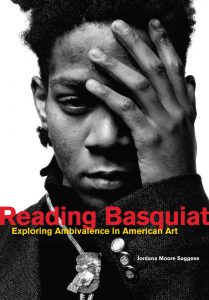
Saggese’s first book, Reading Basquiat: Exploring Ambivalence in American Art, was published by UC Press in 2014.
JTP: I love these questions as a fundamental starting point—not supplement—to the question of teaching art history. You were previously on the faculty at the California College of the Arts, and are now at University of Maryland, College Park. How has the transition been?
JMS: Teaching at an art school for the first ten years of my career was a wonderful experience in that it gave me direct and constant access to working artists. Thanks to my colleagues I was able to stay current in the field—a challenge for any historian of contemporary art—and my students constantly challenged me to make the history of art come into real time and space. CCA was also a site of experimentation, where students and faculty were willing to challenge one another, to wrestle openly with difficulty, and to fail. I have tried to bring those values to my teaching at Maryland as well. I have found the students and faculty at College Park to be deeply invested in their individual fields of interest but also in the discipline as a whole. There has also been tremendous support for my research practice, which has been a great benefit to making this transition.
JTP: As a Basquiat scholar, what is something you wish more people know about the artist?
JMS: I wish that more people considered the extent to which Basquiat’s celebrity status has threatened to eclipse his critical significance. My main project has been, and continues to be, writing this artist into the history of American art. I would also add that working on Basquiat presents extreme challenges for a researcher. There is no public archive of his work and approximately 85-90% of the paintings and drawings are in private collections (and I might mention, constantly being sold). This means that in order to see the works, one must shake a lot of hands, charm a lot of people, and knock on lots of doors. Working on Basquiat requires a thick skin, as I am often embroiled in territorial battles or even ignored. I also spend a lot of money traveling to see exhibitions so that I might glimpse the works in person. So, it’s not your typical research project!
JTP: I can only imagine the challenges that presents in pushing research forward—it’s far from a straightforward dive into the archives. What are you working on currently?
JMS: My second book, The Basquiat Reader: A Critical Anthology will be published by the University of California Press in 2020. The Basquiat Reader is a comprehensive sourcebook on Basquiat for both general audiences and advanced readers. Through a combination of interviews with the artist, criticism from the artist’s lifetime and immediately after, previously unpublished research by me, and a selection of the most important critical essays on the artist’s work, The Basquiat Reader provides a full picture of the artist’s views on art and culture, his working process, as well as the critical significance of his work both then and now. It is my hope that by giving more people access to the primary sources, we will see more scholarship on this artist.
My new book project considers representations of black male athletes as a point of entry to thinking about how black men have historically been presented to (and positioned by) the white mainstream public as a fear/fantasy. More specifically, I examine the ways in which black masculinity is constructed in the visual realm, and how the black athletic body can shape the moral, physical, and social position of African American men more broadly. Over five chapters I analyze key moments in the history of the sport, prominent black athletes and their representation in the American popular press and visual art.
JTP: That is such important work, especially as those constructions persist and accelerate in contemporary visual culture. What are your hopes for Art Journal during your tenure?
JMS: During my tenure I would like to continue to build on the global reach of the publication—in terms of both content and readership. I mean global here as something more than a keyword to signal “diversity.” I use global to signal an interconnected conversation between Europe, Asia, Africa, Latin America, South America, the Pacific—rather than a series of isolated references to an “other.” I want to think of how the perspective of modern and contemporary art from Mumbai or even Beijing connects to as well as lives separate from the touch-points of America and Europe. This is something that I began to explore in my edited forum, “Diversity and Difference,” published in Art Journal in 2016—that is, how can we think beyond the paradigm of margins and center?
I am also hoping to increase a direct engagement of artist members via the introduction of new features, such as “Object Lessons,” which will first appear in Fall 2019. This is an opportunity for artists to consider a specific object of visual culture that has directly impacted or influenced their own practice. I am also increasing the diversity of artists that we publish in Art Journal. For example, every artist project for issues published in 2019 was developed by a woman of color.
Finally, I want to highlight the role of the journal as a forum for professional conversations. Readers can expect to see short essays on fair use, censorship, and the white supremacist logic of art history—topics that typically are buried in whispers. I see Art Journal as a place where these difficult conversations and issues come to light. Many readers of Art Journal are also teachers, and I hope to bring more focus to issues of pedagogy over the coming years of my tenure as Editor-in-Chief.
JTP: It’s exciting to see the direction you are bringing to it. What are some of your other arts-related recommendations at the moment?
JMS: I have really enjoyed seeing the conversation around #POCarthistory (started by Ananda Cohen-Aponte [who recently took over CAA’s Instagram]) develop on Twitter over the last months. As someone interested in our current moment I am constantly reading Hyperallergic and I have found the resources on the website of the Association for Critical Race Art History very important to my own pedagogical development. I am currently reading The Painter’s Touch by Ewa Lajer-Burcharth.
JTP: Do you have a favorite exhibition you’ve seen recently?
JMS: This year I really enjoyed the shows by Jack Whitten (Met Breuer) and Nari Ward (New Museum), but I am still reeling from the show of new paintings by Lynette Yiadom-Boakye (Under-Song for a Cipher), which I saw at the New Museum two years ago. That show left me speechless.
The Spring 2019 issue of Art Journal is now online.
Not a CAA member? Join today and begin exploring immediately.
CIHA World Congresses in Florence and São Paolo
posted by CAA — May 20, 2019
A SESSION AT THE 2019 CAA CONFERENCE INTRODUCED TOPICS FOR The 35th World Congress, Parts 1 and 2, of the Comité International d’Histoire de l’Art (CIHA)
David Roxburgh, Prince Alwaleed Bin Talal Professor of Islamic Art History at Harvard University, contributed the following article about the next two world congresses organized by CIHA so that CAA members can consider attending and participating. Professor Roxburgh is the current president of the National Committee for the History of Art (NCHA), the US affiliate of CIHA that connects the international committee’s work with CAA and its members to sustain the global exchange of art historical work.
Motion: Transformation and the Life of Artworks, the session sponsored by NCHA at the 2019 CAA Annual Meeting in New York, brought together scholars from the organizing committees of Italy and Brazil who will share the quadrennial 35th CIHA World Congress. The themes are Motion: Transformation, taking place in Florence in 2019, and Motion: Migrations, taking place in São Paolo in 2020. The CAA panelists comprised Marzia Faietti (Gallerie degli Uffizi, Florence), Claudia Mattos Avolese (Universidade Estadual de Campinas, São Paulo), Marco Musillo (Kunsthistoriches Institut, Florence), and Christina Strunck (Friedrich-Alexander-University, Erlangen-Nürnberg), with Jesús Escobar (Northwestern University) serving as respondent and Nicola Courtright (Amherst College) as chair. The thoughtful remarks of Professor Jesús Escobar are included here for those who could not attend the panel.
The CIHA Congress in Florence will be held September 1-6, 2019, and in São Paulo September 13-19, 2020. The final program for Florence is now available.
For the São Paulo program, a call for paper submissions is available here.
NCHA recently awarded 12 travel grants to graduate students from PhD programs in the history of art from across the United States to attend the 35th CIHA Congress in Florence. A competition will be announced early in 2020 for graduate students planning to attend the CIHA Congress in São Paulo. We hope to see many art historians working in the US in Florence and São Paulo.
CAA Announces David Raizman as Interim Executive Director
posted by CAA — May 20, 2019

Photo by Michael Froio
On Sunday, May 5, the Board of Directors of CAA voted to appoint David Raizman as the Interim Executive Director of the organization. David has served as Treasurer of CAA since October 2018 and has held a number of administrative and faculty roles in higher education over a long career.
David’s term will begin July 1, 2019, at the close of the term of Hunter O’Hanian, the current Executive Director.
“I’ve been a member of CAA since 1992 and have attended and participated in CAA Annual Conferences since the early 1980s. CAA’s many programs and publications have contributed much to my development as a scholar and teacher. As a board member I’ve enjoyed seeing how CAA serves its broader membership to meet needs and challenges in academe and the arts,” said David Raizman.
“As interim Executive Director I look forward to learning more about the organization and the staff and facilitating the good work they do. I also look forward to continuing the work of Hunter O’Hanian, who created an environment of diversity and inclusion and shifted the direction of CAA toward these important ideas.”
David’s term as Interim Executive Director will span from July 1, 2019 through the appointment of a new Executive Director. The Executive Director search is currently underway, with the board of directors interviewing placement firms. The goal is to have a new executive director to lead CAA by the end of 2019.
“The Board of Directors is pleased that an experienced administrator and accomplished academic with David Raizman’s qualifications will lead CAA through this transition,” said Jim Hopfensperger, President of the CAA Board of Directors. “We have full confidence David is the right person to advance CAA’s strengths as a learned society and a professional association, while positioning the organization for long-term success under the next Executive Director.”
David Raizman biography
David Raizman is Distinguished University Professor Emeritus of Art & Art History in the Westphal College of Media Arts & Design at Drexel University in Philadelphia, Pennsylvania. He is the author of History of Modern Design (London, Laurence King and New Jersey, Pearson, 2nd edition 2010) as well as several articles and reviews on design history, including subjects ranging from American furniture to the history of world’s fairs. He earned his PhD at the University of Pittsburgh under John Williams and earlier in his career published articles and reviews on the medieval art of Spain. Prior to being appointed CAA Treasurer he was Treasurer of the International Center of Medieval Art (ICMA) and a member of its Finance Committee. During his academic career Dr. Raizman served in several administrative roles, as department head, associate dean, and interim dean in the Westphal College of Media Arts & Design, and his College’s representative to the National Association of Schools of Art & Design (NASAD).
During the summer 2015 he directed a four-week NEH-funded summer institute entitled “Teaching the History of Modern Design: The Canon and Beyond” at Drexel University. He was a guest lecturer at Tsinghua University in Beijing in 2014, and a fellow and guest lecturer at the Wolfsonian/FIU Museum in Miami Beach, Florida (2009; 2010). He is the co-editor of two books, with (current CAA board member) Carma Gorman, of Objects, Audiences, and Literature: Alternative Narratives in the History of Design
(Cambridge Scholars Publishing, 2007), and most recently, with Ethan Robey, of Expanding Nationalisms at World’s Fairs: Identity, Diversity and Exchange, 1851-1915 (Routledge, 2017). His latest book, Reading Graphic Design: Image, Text, Context is scheduled for publication with Bloomsbury in 2019.
News from the Art and Academic Worlds
posted by CAA — May 08, 2019
Want articles like these in your inbox? Sign up: collegeart.org/newsletter
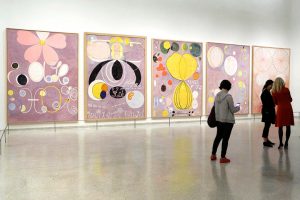
Works by Swedish painter Hilma af Klint (1862-1944) in the Guggenheim Museum’s Paintings for the Future exhibition. Photo: Johannes Schmitt-Tegge/picture-alliance/dpa/AP
What Can the Museum World Learn From Hilma af Klint?
“I think this shows us that we have narrowed the field of ‘blockbuster’ artists to a very small number of men. But there are other great artists that capture the imagination of the public.” – Helen Molesworth (Slate)
Experts Warn Macron Against Rushing to Rebuild Notre-Dame
More than 1,150 artists, curators, academics, and leading conservators have publicly called on the French president not to rush into reconstruction. (France 24)
US Museum Asks Far-Right German Party to Stop Using Its Painting for an Election Ad
The Clark Art Institute condemned the use of a Jean-Léon Gérôme painting in its collection, but the work is in the public domain. (Hyperallergic)
One of World’s Wealthiest Educational Institutions May Close Its Renowned Press
“The fragile truce surrounding Stanford University Press remains cause for concern, but the scale and rapidity of the mobilization that rose up to defend the press is reason for guarded optimism.” (The Nation)
Leonard A. Lauder Research Center for Modern Art Launches Digital Archives
The Digital Archives Initiative (DAI) was made possible through partnerships with institutions and artists’ estates worldwide. (Artforum)
Making Monographs Open
A project that aims to slash the cost of producing monographs could help make more of them available to the public for free. But will scholars participate? (Inside Higher Ed)
CWA Picks for May 2019
posted by CAA — May 02, 2019
CAA’s Committee on Women in the Arts selects the best in feminist art and scholarship to share with CAA members on a monthly basis. See the picks for May below.
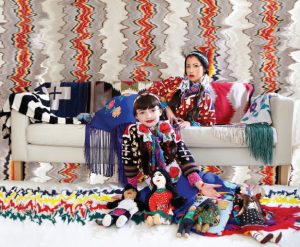
Wendy Red Star, Apsáalooke Feminist #3—Apsáalooke Feminist Series, 2016, on view at the Newark Museum through June 16th. Image: © Wendy Red Star
Legal Gender: The Irreverent Art of Anita Steckel
April 13 – May 12, 2019
Verge Center for the Arts, Sacramento
When artist Anita Steckel’s (American, 1930-2012) solo exhibition, The Sexual Politics of Feminist Art (1972, Rockland Community College) was threatened closure by a County Legislator due to the erotic imagery in her work, she founded the Fight Censorship Group. The women’s collective, including member artists Louise Bourgeois, Hannah Wilke, and Joan Semmel among others, denounced the double standard in the artistic community between sexualized men and women, and played a major role in reshaping thought around erotic subject matter within the context of sexual and creative freedom. This exhibit, curated by Kelly Lindner and Rachel Middleman, spans five decades of the feminist artist’s collage and appropriation artwork including the Mom Art photomontage series from the 1960s (the title playing on the recognized term “Pop Art”) incorporating found imagery of anonymous librarians and priests critiquing racism, war and sexual inequalities; the Giant Woman series of photomontage with graphite depictions of mammoth women taking over New York City landmarks; her last series reworking personal photographs of family and friends, and more. As the exhibit statement points out: “In her deft combinations of photomontage, collage, drawing, and painting, Steckel proposes a broader discussion of female sexuality, feminism, gender parity, racial injustice, and political reckoning.” The exhibit surely pushes art’s boundaries, even today, as in the artist’s own words: “Good taste is the enemy of art. It’s wonderful for curtains, but in art, it’s suffocating.”
Wendy Red Star: A Scratch on the Earth
February 23 – June 16, 2019
Newark Museum, New Jersey
A Scratch on the Earth is a mid-career survey held at the Newark Museum of Wendy Red Star, a multidisciplinary artist (b. 1981) from Montana and member of the Apsáalooke (Crow) Tribe, organized by Tricia Laughlin Bloom, Curator of American Art, and guest curator Nadiah Rivera Fellah. Red Star’s presentation, including installation, photography, photo-collage, textile, and mixed media, explores the visual, social, and racial history of indigenous Crow traditions and mythology, often intermixed with the tribe’s painful experiences during which it lost land ownership under colonial American policies. Red Star critically analyzes and researches the portrayal of Native American subjects in the nineteenth century, an imaginary representation of the American West and Indian Reservations manipulated and promulgated by the US government and Hollywood, and highlights the Crow’s manifold resistance to such geographical, political and gendered boundaries. Many of Red Star’s series, for example Map of the Allotted Lands of the Crow Reservation, Montana—A Tribute to Many Good Women (2016), foreground the Crow’s matriarchal and ceremonial legacies supplanted by government enforced patriarchal structures. Red Star playfully and powerfully utilizes photography in her Apsáalooke Feminist series as a contemporary vehicle to refashion “original” Crow Indian representations in Western art through the production of large scale self-portraiture and the exuberant display of her own young daughter, both dressed in elk-tooth attire. A well-illustrated catalogue with essays is published in conjunction with the exhibition.
Aleksandra Karpowicz: Body as Home
May 6 – September 15, 2019
Venice, inauguration of GAD – Giudecca Art District, Italy
Aleksandra Karpowicz’s Body as Home (2018), a three channel 15-minute film, will mark the official launch of Giudecca Art District (GAD), coinciding with the opening of the 58th Biennale Arte 2019 in Venice, Italy. It portrays a journey of three protagonists who discover their selves through their bodily interactions with space. They are captured in four urban locations: Cape Town, London, New York, and Warsaw, navigating complex relationships between their social identity, migration, and the understanding of the concept of “home.” Karpowicz, a migrant herself (born in Poland, living in London), complicates the latter beyond its literal meaning and associations with a dwelling or a place of habitation. She questions when one becomes a visitor or a local inhabitant; how this is conditioned by movement, going away, towards or from and to. The artist is interested in the feeling of “being at home” in relation to geographical locations, to other people but also the self.
Still I Rise: Feminisms, Gender, Resistance, Act 2
February 9 – May 27, 2019
The De La Warr Pavilion, Bexhill-on-Sea, UK
Still I rise, with Act 1 presented at Nottingham Contemporary in Nottingham UK at the end of 2018 and beginning of 2019, and Act 2 now on display in The De La Warr Pavilion, UK, is a powerful exhibition featuring works of over 40 practitioners, including for example Carolina Caycedo, Barby Asante, Tai Shani, Osias Yanov or Glenn Belverio (Glennda Orgasm), among many others. They are grounded in intersectional and queer feminist perspectives in a global context. The exhibition explores ways in which resistance has been approached and enabled through associated with feminism and feminist protest principles of collaboration, mutual support, community building, empathy, nurture, and solidarity. The title references Maya Angelou poem Still I rise (1978), concerning oppression and the struggle to overcome prejudice and injustice, which begins:
‘You may write me down in history
With your bitter, twisted lies,
You may trod me in the very dirt
But still, like dust, I’ll rise.’
Diverse creative practices on display navigate and suggest alternative ways of living and being together that are respectful of human rights and equality.
Jeschkelanger: #siostrzane_odbicie (#sister’s_reflection)
May 15 – June 23, 2019
SiC! Biuro Wystaw Artystycznych (Glass and Ceramics Gallery), Wrocław, Poland
The exhibition features glass work of two artists from Germany, who in December 2016 founded the artist duo Jeschkelanger. They work across multiple media, however they connect through glass, which acts as a space of exploration, collaboration, and exchange of ideas. Jeschkelanger question its limits and possibilities as a material, a medium, a method, and what they call “a melting point,” “a danger zone” and “a contact zone.” The works featured in this exhibition address the concept of hospitality and suggest ways in which the other may be welcome, while acknowledging difference and enabling mutual exchange, and where the dynamics between the host and the guest are questioned. Jeschkelanger create space for a future of shared mutual respect and connectivity, embodying feminist principles of solidarity and friendship. Their vision is hopeful and inviting the politics of togetherness.
THE UNEXPECTED SUBJECT: 1978 ART AND FEMINISM IN ITALY
April 4 – May 26, 2019
FM Center for Contemporary Art, Milan
Curators Marco Scotini and Raffaella Perna selected the year 1978 as “the catalyst year of all energies in play (not only in Italy)” to develop this broad investigation and “reconstruction of the relationship between visual arts and feminist movement in Italy” and the exchanges of feminist artists in Italy at this time with artistic panorama of Europe and beyond. The exhibit will include work from artists included in the 1978 Venice Biennale—which counted 80 women at a time when entrance was difficult—including the visual poetry of Mirella Bentivoglio (1922-2017) among others. The exhibit description names several notable exhibitions that took place in 1978 including an exhibition dedicated to Ketty La Rocca (1938-1976), a leading figure of Italian neo-avant-garde; the first feminist exhibit in Wroclaw, Poland, First International Women’s Art Exhibition; Coazione a Mostrare and Magma, which presented many significant European artists including Marina Abramovic, Hanna Darboven, Gina Pane, VALIE EXPORT, Rebecca Horn, Natalia LL among others. The year also included the international feminist seminar Comrade Woman: Women’s Question—A New Approach? in Belgrade; and the Cooperative Beato Angelico in Rome, the first artistic space entirely run by women. Though most of these notations include the word woman, the description notes the exhibition “criticizes the mainstream historical-critical view that relegates women artists to a marginal position” and privileges “artworks that demystify gender stereotypes and reflect on the role of women in society” including loaned artwork and printed materials related to feminist movements—posters, fanzines, LPs, photographs, and books.
LIKE SUGAR
February 9 – June 23, 2019
Tang Museum, Saratoga Springs, New York
Sugar is all around us, from harvest to consumer product, playing a role in several social justice issues from slavery to ecology and health epidemics and food injustice. Like Sugar explores these both positive and negative aspects of the sweet-tasting, soluble carbohydrates through contemporary artwork, historical materials and material culture. Viewing Emily Eveleth’s both delicious and engorged Big Pink (2016), enlarged pink frosted donuts in oil on canvas, in the same space as 19th-century stereoscopic images depicting slaves in sugar cane fields, such as Preparing Cane Blocks for Replanting, St. Kitts, immediately provokes thought and discussion around sugar in our lives in the present and past. Other artists in the exhibition include Julia Jacquette, Zine Sedira, and Laurie Simmons.
Mickalene Thomas: Do I Look Like a Lady?
March 9 – August 31, 2019
Portland Art Museum
Artist Mickalene Thomas is well-known for her photography, installation, and more recently film production reconsidering black womanhood through a queer lens. The Portland Art Museum just acquired the video installation, Do I Look Like a Lady (Comedians and Singers) (2016), the first by the artist in their collection. The video displays in checkerboard format, moving image footage and individual voices of African-American actors and singers from the 20th century such as Eartha Kitt, Jack “Moms” Mabley, Whoopi Goldberg, and Whitney Houston among others. They express heartbreaking roles, pointed lyrics, sharp jokes, and strong statements of resistance to the dominant culture offering a strong, rebellious, and poignant consideration of the roles of black women in the United States. The museum notes that Thomas spent time in Portland as a young adult and while there admired an exhibition of Carrie Mae Weem’s work in 1994, which was a formative experience that led her to becoming an artist.



